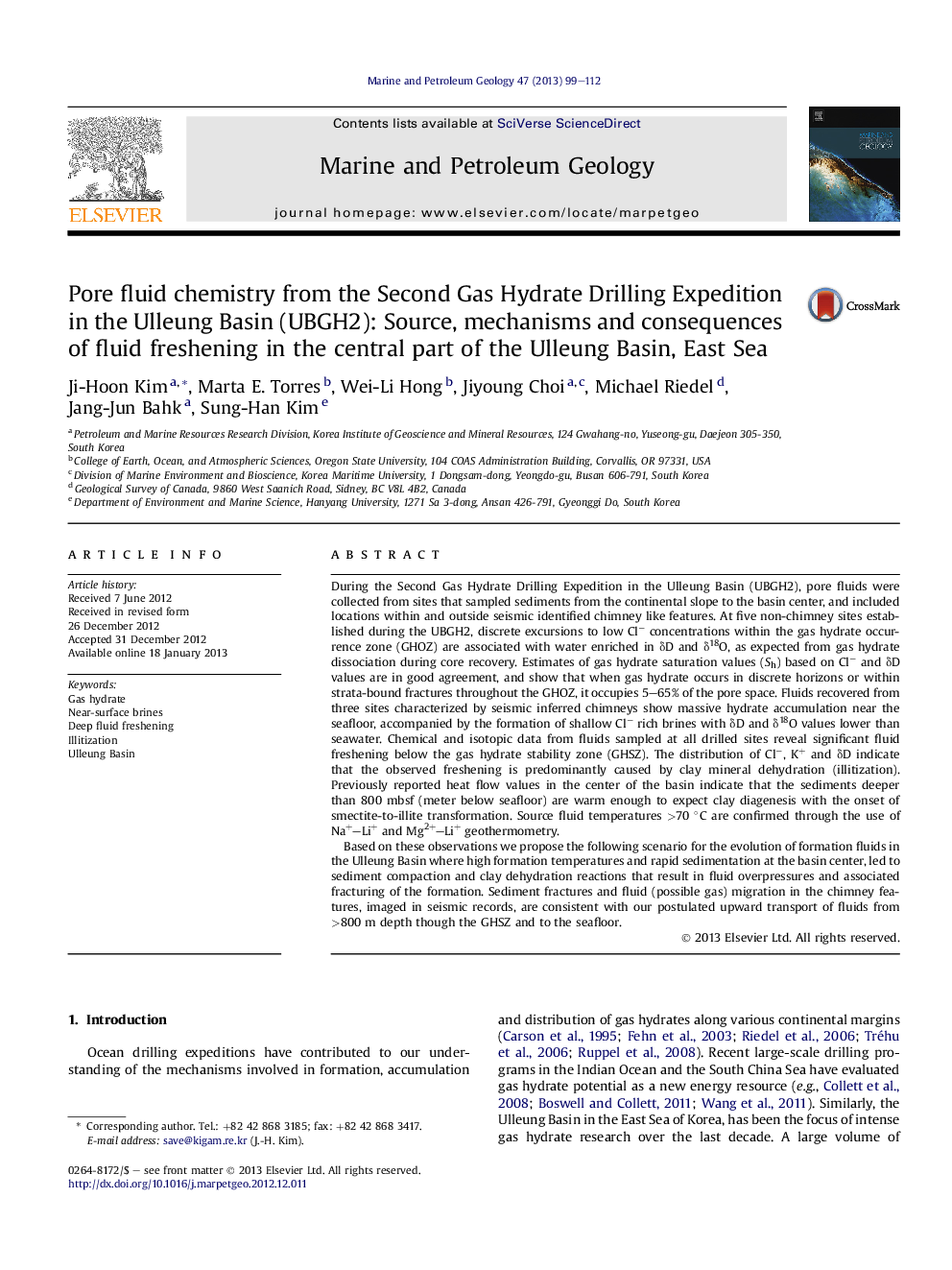| کد مقاله | کد نشریه | سال انتشار | مقاله انگلیسی | نسخه تمام متن |
|---|---|---|---|---|
| 4695746 | 1637177 | 2013 | 14 صفحه PDF | دانلود رایگان |

During the Second Gas Hydrate Drilling Expedition in the Ulleung Basin (UBGH2), pore fluids were collected from sites that sampled sediments from the continental slope to the basin center, and included locations within and outside seismic identified chimney like features. At five non-chimney sites established during the UBGH2, discrete excursions to low Cl− concentrations within the gas hydrate occurrence zone (GHOZ) are associated with water enriched in δD and δ18O, as expected from gas hydrate dissociation during core recovery. Estimates of gas hydrate saturation values (Sh) based on Cl− and δD values are in good agreement, and show that when gas hydrate occurs in discrete horizons or within strata-bound fractures throughout the GHOZ, it occupies 5–65% of the pore space. Fluids recovered from three sites characterized by seismic inferred chimneys show massive hydrate accumulation near the seafloor, accompanied by the formation of shallow Cl− rich brines with δD and δ18O values lower than seawater. Chemical and isotopic data from fluids sampled at all drilled sites reveal significant fluid freshening below the gas hydrate stability zone (GHSZ). The distribution of Cl−, K+ and δD indicate that the observed freshening is predominantly caused by clay mineral dehydration (illitization). Previously reported heat flow values in the center of the basin indicate that the sediments deeper than 800 mbsf (meter below seafloor) are warm enough to expect clay diagenesis with the onset of smectite-to-illite transformation. Source fluid temperatures >70 °C are confirmed through the use of Na+–Li+ and Mg2+–Li+ geothermometry.Based on these observations we propose the following scenario for the evolution of formation fluids in the Ulleung Basin where high formation temperatures and rapid sedimentation at the basin center, led to sediment compaction and clay dehydration reactions that result in fluid overpressures and associated fracturing of the formation. Sediment fractures and fluid (possible gas) migration in the chimney features, imaged in seismic records, are consistent with our postulated upward transport of fluids from >800 m depth though the GHSZ and to the seafloor.
► We performed chemical and isotopic analyses of pore fluid samples from the UBGH2.
► Discrete Cl− depletion and brine are related to gas hydrate dissociation.
► Deep fluids by illitization also lead to freshening at the basin center.
► Fluids are apparent to transport upward through fractures or faults below 800 mbsf.
Journal: Marine and Petroleum Geology - Volume 47, November 2013, Pages 99–112